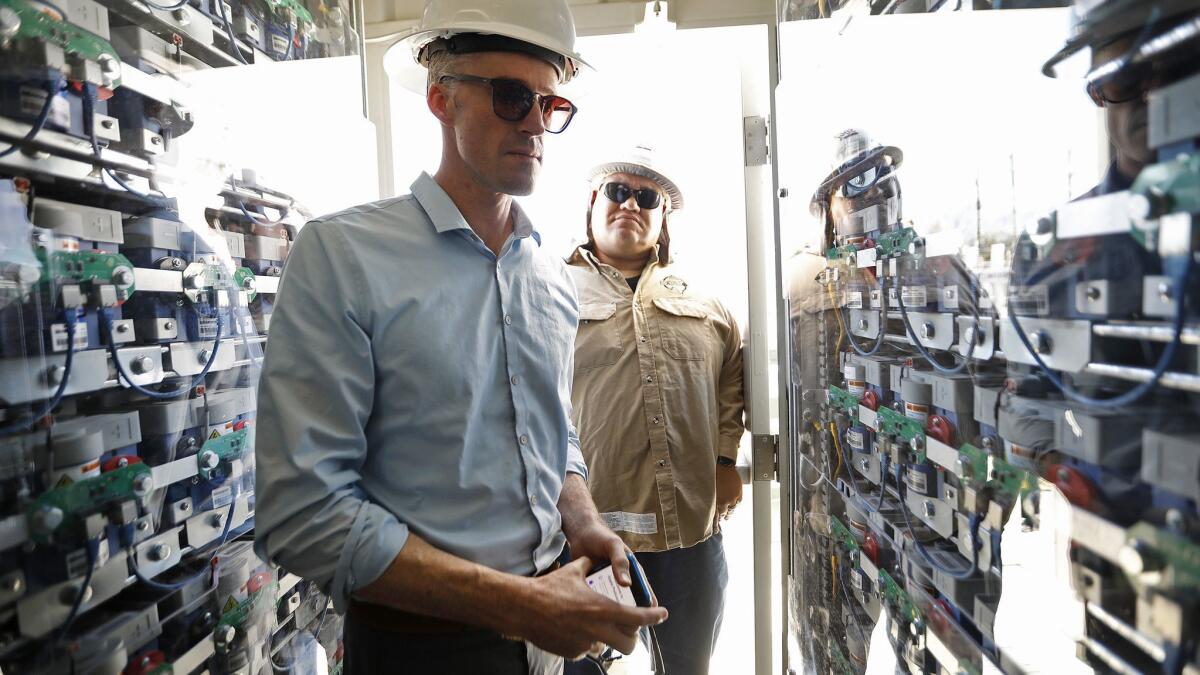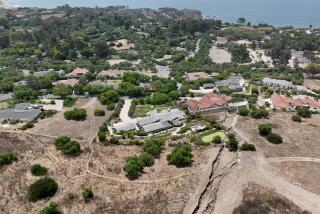Editorial: To prevent wildfires, California may need to endure power blackouts

This summer, when strong winds blow and temperatures soar, California’s largest power companies plan to shut off at-risk power lines so they don’t spark wildfires.
De-energization, as it is called, has always been a tool for utilities to use when the risk of wildfire is high, though it has been infrequently deployed. But after two horrible years of catastrophic wildfires ignited by downed power lines, regulators are poised to give utilities the authority to shut off power more aggressively during high fire season. The change will primarily affect people in high-fire-risk zones, such as mountains, forests and foothills, but the resulting outages may affect anyone on the grid, including coastal urbanites if utilities power down high-voltage transmission lines. Pacific Gas & Electric, for example, has warned that shutting down high-voltage lines miles away could plunge San Francisco into the dark.
It’s an understatement to say that aggressive power shutoffs will pose challenges for the public — and especially for people who rely on electricity to run life-maintaining medical devices. But power company equipment has been the source of the state’s largest and deadliest fires over the last two years. If sharing some short-lived pain can prevent wildfires such as the one that just about vaporized the town of Paradise and killed 85 people last fall, then it would be worth the trouble. In fact, the Camp fire was ignited by a malfunctioning PG&E transmission line that the utility had planned to shut down days before, only to decide that conditions didn’t warrant such a drastic action. Tragically, it turns they did.
Power shutoffs are an essential if disruptive tool that California utilities are right to use, right now.
On Thursday the California Public Utilities Commission is set to vote on the “public safety power shutoff” rules for the state’s three big investor-owned utilities: PG&E, Southern California Edison and San Diego Gas & Electric. And it should approve them, albeit with some clear guidelines on when it’s appropriate to pull the plug and how to give folks adequate time to prepare or relocate.
Commission President Michael Picker has said that power shutdowns should be a last resort, and we agree. But what constitutes a “last resort” is something that the commission must make clear and not leave solely to the utilities to decide. Left to their own devices, companies might be inclined to shut down power every time the breeze picked up, and we could understand why. Sacramento’s failures to address the strict liability standard for utilities, which requires them to pay for fire damages caused by power lines even if they were not deemed negligent, has put the state’s electrical providers in a very difficult financial position.
Enter the Fray: First takes on the news of the minute »
PUC staffers want the utilities to specify the conditions that would trigger preemptive outages, such as wind speed, temperature and humidity levels. But utilities are resistant to that, arguing that the determination varies from circuit to circuit and requires real-time information and on-site expertise. That’s reasonable, but surely there is some middle ground that would give utilities the flexibility they need to act in changing conditions and give the public the assurance that power shutoffs will be used only when truly necessary.
It’s not just a question of convenience; losing power is a public safety threat itself. Only about one in 10 wildfires is caused by electrical equipment. In areas where residents don’t have reliable mobile phone service, including communities in the Santa Monica Mountains, losing power means being cut off from important information about nearby fires regardless of the source. Witness what happened in Malibu in November when the Woolsey fire led to an unplanned blackout. Evacuating the city became a hours-long challenge for many residents when the traffic lights on Pacific Coast Highway went dark. Though communities and individuals will be responsible for making their own preparations for power outages, such as by making plans to relocate temporarily or by acquiring backup generators, they shouldn’t have to endure more blackouts than is absolutely necessary.
Finally, de-energization should not be a substitute for other fire prevention measures, such as burying power lines in high-fire-risk areas when feasible and developing microgrids that can provide backup power to communities cut off from the larger grid. Power shutoffs are an essential if disruptive tool that California utilities are right to use, right now. But public safety will be best served by taking steps to ensure that preemptive blackouts are infrequent, well justified and, eventually, unneeded.
Follow the Opinion section on Twitter @latimesopinion and Facebook
More to Read
A cure for the common opinion
Get thought-provoking perspectives with our weekly newsletter.
You may occasionally receive promotional content from the Los Angeles Times.










